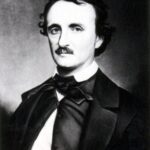Personification is a beautiful type of figurative language that gives human qualities to things that aren’t human. For instance, “the sun’s fingers tickled my back” is a good way to show that it is warm outside. Personification is often used in fiction and poetry. Finally, it is a term often used on state tests. Here are some fun ways to teach about personification through books and poetry.
Poems
“Summer Grass” by Carl Sandburg is a great way to introduce your students to personification.
Summer grass aches and whispers
It wants something: it calls and sings; it pours
out wishes to the overhead stars.
The rain hears; the rain answers; the rain is slow
coming; the rain wets the face of the grass.
Questions to ask students when studying this poem can include: Can grass whisper? Ultimately, why is the grass aching and whispering? What does the grass want? Who is the rain hearing and answering? One of the most important connections for students to make is that the rain cannot hear and grass doesn’t have a face. Yet, why does Sandburg use personification in his poem? If necessary, take away the personification and show students what the writing is really saying.
The grass is very dry.
It hasn’t rained in days.
It rains and gets the grass wet.
Through the comparison between the poem with personification and the one without, students can see that this literary device really adds passion and emphasis to the poem. Here are some more poems that use personification. Another good activity to do with these poems is to have students write the object being personified and the meaning of the personification.
Books
There are many fun books out there to help kids learn about personification.
One of my favorites is And the Dish Ran Away with The Spoon. Obviously, the title says it all. Dishes and spoons can’t run. Basically, the whole plot revolves around personification. Kids will love this adaption of the nursery rhyme beginning “Hey diddle diddle.” This book takes it one step further and has the dish and spoon really run away. The other characters in the nursery rhyme set off to look for them. An easy fun lesson to do after this book is to write down a favorite personification sentence from the book, illustrate it and then interpret the sentence. This is a great activity for kids to partake in during an independent rotation for reading groups.
The Giving Tree by Shel Silverstein is another high quality book that uses personification. Basically, the book tells a tale of the changing relationship between a tree and a boy. The tree is happy, sad and loves. While reading this book make a chart and have students do thumbs up when they hear a word that shows personification. Chart the words for later reference.
I strongly believe in learning through example. Poems and books are a great way for teaching about literary devices such as personification. For additional lessons on personification try this one from scholastic.com and these three on volweb.utk.edu.
Sources:
“Summer Grass” by Carl Sandburg
The Giving Tree by Shel Silverstein
Library.thinkquest.org
And the Dish Ran Away with The Spoon by Janet Stevens
scholastic.com
volweb.utk.edu.






